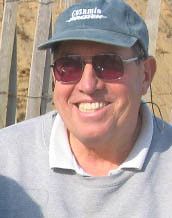
I’m sure that it’s been hard not to notice the scaffolding that has inhabited the rear of the church near the south tower. This assemblage signals the beginning of a process that will lead to the painting and redecoration of the church interior.

The scaffolding has been used to allow our “History Detective”, Mr. Matthew Mosca, to examine and sample the various paint levels and to determine what previous paint schemes might have been throughout the lifetime of this building since its reconstruction following the disastrous fire of 1854 and its reconstruction which was completed in 1856 under the direction of architect Richard Upjohn.
Mr. Mosca, who has achieved a national reputation for work in this area has carefully exposed key sections of the wall surfaces and documented the found conditions relating to the 1856 original design and a renovation that took place in 1902. Following work in his laboratory performing analysis to determine dating and original paint coloration, he will be presenting us with a detailed report documenting his findings.
This report will be used as a reference and starting point to develop a new painting scheme for Old Saint Paul’s. The images shown above are of two of the exposed areas and reveal a very decorative treatment. More on all of this to come.


















